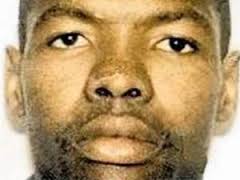
Moses Sithole was found guilty of 38 murders and 40 rapes in 1997. Born in South Africa on November 17, 1964, Moses Sithole is considered one of South Africa's worst serial killers. In 1997, Sithole was found guilty of 38 murders and 40 rapes. A significant number of Sithole's victims were never identified.
Moses Sithole, one of five children, was born in Vosloorus, near Boksburg in the Transvaal Province of apartheid (now Gauteng), South Africa, on November 17, 1964, to Simon and Sophie Sithole. His childhood of poverty was exacerbated after his father died and his mother, unable to support the children, abandoned them at a local police station. They were placed in an orphanage in Kwazulu Natal, but systematic abuse provoked the teenage Sithole to run away after three years, seeking refuge first with his older brother Patrick before going to work in the Johannesburg gold mines. Sithole was sexually precocious from an early age, but his relationships were short-lived. Some have surmised that his mother’s abandonment of her children might have played a role in his aggressive attitudes toward women. He also reportedly told some of his rape victims about his own bad experiences at the hands of a previous girlfriend. Sithole has been described as a handsome and charming man, and most of his victims were enticed to their assaults, and often deaths, in broad daylight, with promises of employment opportunities that would never materialize. His social ease and intelligent demeanor made the string of brutal assaults even more chilling, and he was eventually charged with 38 murders and 40 rapes. A significant number of Sithole’s victims were never identified.
It is not known when Sithole raped his first victim, but his first recorded incidence of rape occurred in September 1987, involving 29-year-old Patrica Khumalo, who testified at his 1996 trial. Three other known rape victims came forward, including Buyiswa Doris Swakamisa, who was attacked in February 1989. She made a police report at the time that resulted in Sithole’s arrest and trial. In 1989, he was jailed in Boksburg Prison for six years for the rape of Swakamisa. Sithole maintained his innocence throughout the trial and was released early, in 1993, for good behavior. Perhaps Sithole learned a lesson from his time in jail: that rape victims left alive can produce consequences. It is not known how soon after his release that he began his rape and killing spree, but between January and April 1995 in Atteridgeville, west of Pretoria, four bodies of young black women who had been strangled and probably raped were discovered. This began a chain of events that unearthed an appalling litany of brutality and death. When newspapers became aware of the similarities in the killings of each victim, police were forced to admit that a serial killer might be operating in the area. The discovery of the body of one victim’s 2-year old son incited further media coverage, but in a society inured to violence, media interest was relatively brief.
However, over the next few months in the vicinity of Pretoria, the recovery of several bodies all sharing the same gruesome pattern of having been raped, tied up and strangled with their own underwear gave the public pause. On July 17, 1995, a witness saw Sithole acting suspiciously while in the company of a young woman; the witness then discovered her body when he went to investigate. Unfortunately, the witness had been too far away to identify the killer. A special investigating team was established within the Pretoria Murder and Robbery Unit to determine whether the murders conformed to a pattern, but the method of attack varied to such an extent that it was impossible to be certain that one killer was responsible. As more victims were identified and as the chronology of deaths, rather than the discovery of their bodies, became apparent, clear evidence showed that the killer was evolving his murder technique to extract the greatest pain from his victims, assumedly increasing his own pleasure. His means of approach was also clarified: In a significant number of cases, the victim had been meeting someone who had promised them employment. On September 16, 1995, a body was discovered at the Van Dyk Mine near Boksburg. Further investigation revealed mass graves. Forensic experts recovered 10 bodies in varying degrees of decomposition over the next 48 hours. Investigators were certain that the Boksburg bodies were linked with the victims at Atteridgeville. Media attention was intense throughout the recovery operation, and even President Nelson Mandela visited the scene of the grisly discoveries. Public concern increased with the media coverage, and local authorities sought external help from retired FBI profiler Robert Ressler, who arrived on September 23, 1995. He assisted in developing a profile of the serial killer. The profile indicated that an intelligent, organized individual with a high sex drive was responsible and was operating with a growing sense of confidence, perhaps with the assistance of a second killer.



























Recommended Comments
There are no comments to display.
Join the conversation
You can post now and register later. If you have an account, sign in now to post with your account.